Quick Reference
1925 - '26
Old covered bridge
Charlemont, Mass.
Oil on Canvas
Landscape
Brooks, Ponds, Rivers, Mountains
30" x 36"
Unknown
Rev. and Mrs. Matthews
NA
Related Links
- See also the...
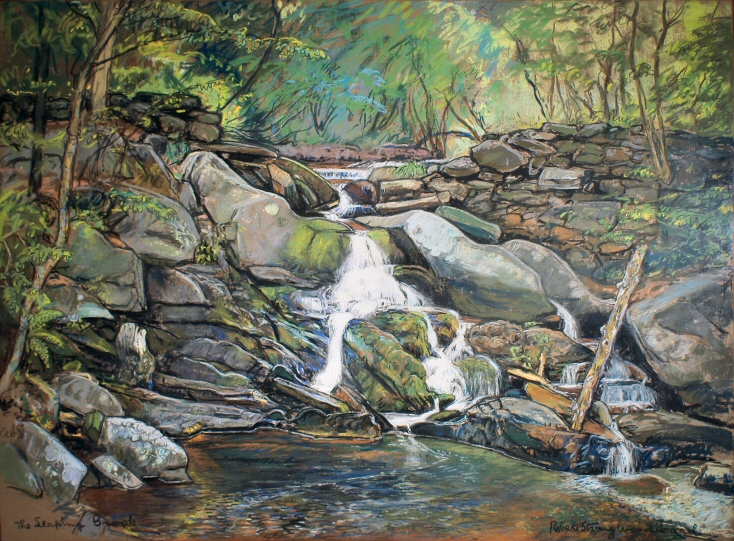 Brooks, Ponds, Rivers Gallery for related pieces.
Brooks, Ponds, Rivers Gallery for related pieces.
- See also: Charlemont Bridge
- Through Summer Hills (Chalk)
- The Long Bridge
- Checkout the Scrapbook story on Through Summer Hills for more.
- See also the...
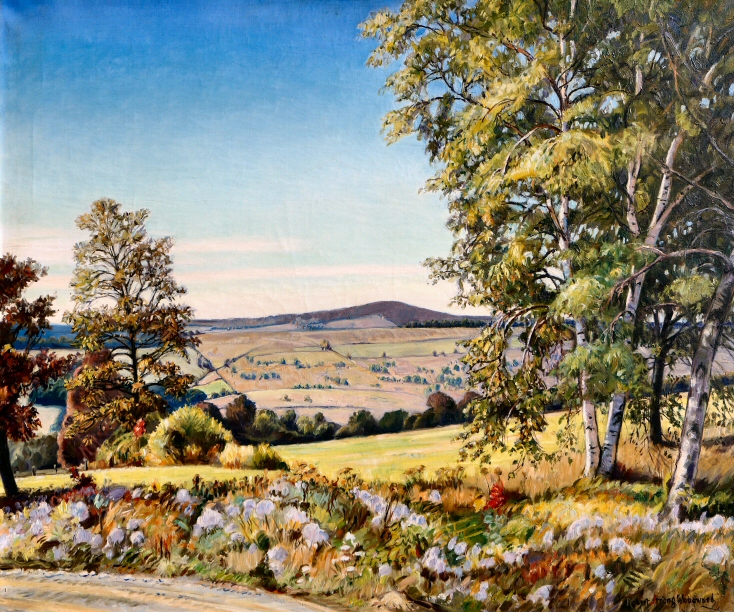 Landscapes & Views Gallery to view related pieces.
Landscapes & Views Gallery to view related pieces.
- See also the Exhibition List for other Exhibits.
- See the Scrapbook story
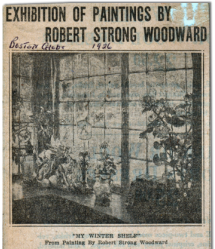
about the Lyman Residence Exhibition, 1926 for more.
Featured Artwork: Through Summer Hills (Oil)
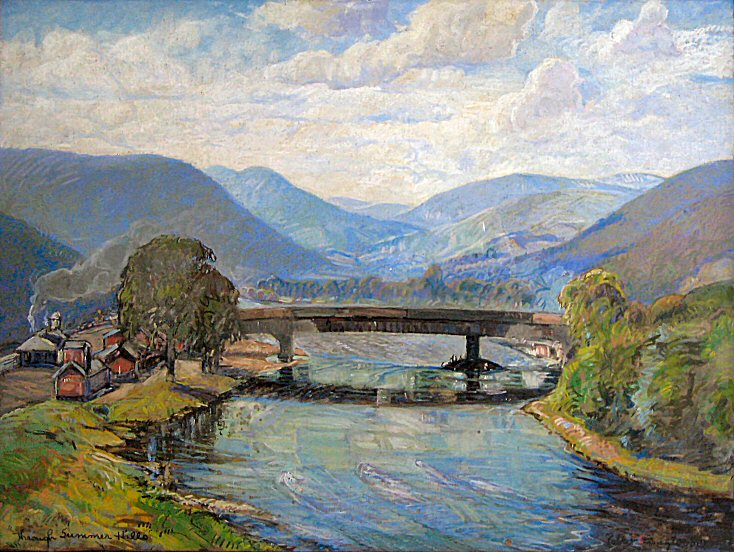
The above image is of Through Summer Hills, Chalk. The original sepia of this painting can be seen below.
RSW's Diary Comments
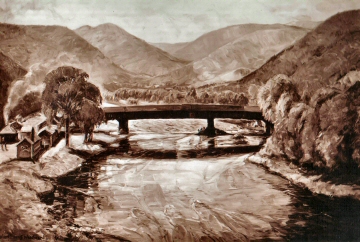
 Through Summer Hills Sepia
Through Summer Hills Sepia
"Painted prior to 1939. The covered bridge at Charlemont, Mass. Painted in the Buckland studio from older 25" x 30" made several years previously and the 25" x 30" destroyed. Also made a chalk drawing of the same subject which is owned by Rev. and Mrs. Matthews of Pelham Manor, N. Y. (see Through Summer Hills (Chalk)."
Comments on the back of a sepia print:
"Varied blues and summer greens predominate. Red buildings at left. Covered bridge dark gray-brown. Water is opalescent with blues, greens, and violets, very iridescent and wet looking! Sky, broken white clouds with open spots of pale blue. River banks run down to warm dull gold."
Additional Notes
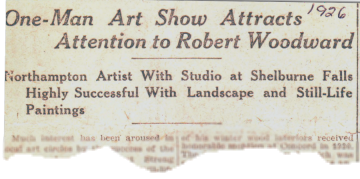
 The 1920's version of this painting was also
The 1920's version of this painting was also
mentioned in this Springfield Union article.
Springfield Daily Republican, Springfield, MA., Sat. April 28, 1928
"A picturesque bridge-and-stream composition,"
Left: Springfield Union, 1926
"'Through Summer Hills,' is a landscape of rich, harmonious colors."
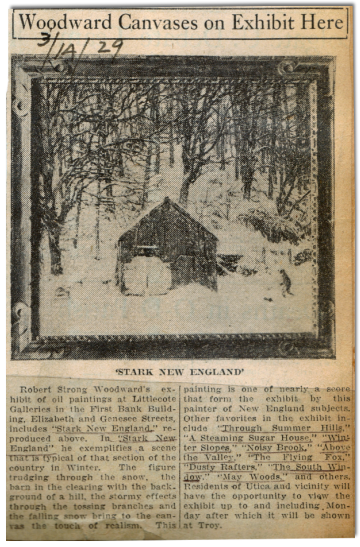
 Article regarding the Littlecote Gallery Exhibition,Utica, NY, 1929, mentions the original painting.
Article regarding the Littlecote Gallery Exhibition,Utica, NY, 1929, mentions the original painting.
 A painting named "Through Summer Hills" was listed as being shown at 3 exhibitions in
the 1920s. It is not the 25" x 30" painting that sat in the studio for almost a decade that Woodward would later make the post--hurricane bridge paintings. This painting is a 36" x 42" and
exhibited at 3 important exhibitions between 1926 and 1929.
A painting named "Through Summer Hills" was listed as being shown at 3 exhibitions in
the 1920s. It is not the 25" x 30" painting that sat in the studio for almost a decade that Woodward would later make the post--hurricane bridge paintings. This painting is a 36" x 42" and
exhibited at 3 important exhibitions between 1926 and 1929.
- Lyman Residence, 1926
- J.H. Miller Galleries, 1928
- Littlecote Gallery, 1929
The 25" x 30" painting that Woodward created the later paintings and chalk was "destroyed" and subsequently does not have a name or is included in our Complete Works List. According to Mark Purinton's first hand account the painting was, "was stored out in the frame room with countless other unfinished paintings as well as those with a purple "D" painted on the backs. " (We recommend you read that essay)
The 1920s painting was mentioned in three articles related to the exhibitions it appeared. To the right, is the article connected with the Littlecote Gallery Exhibition and above are two quotes believed to be related to the 1928 exhibition at J.H. Miller Galleries and 1926 Lyman Residence Exhibit respectively.
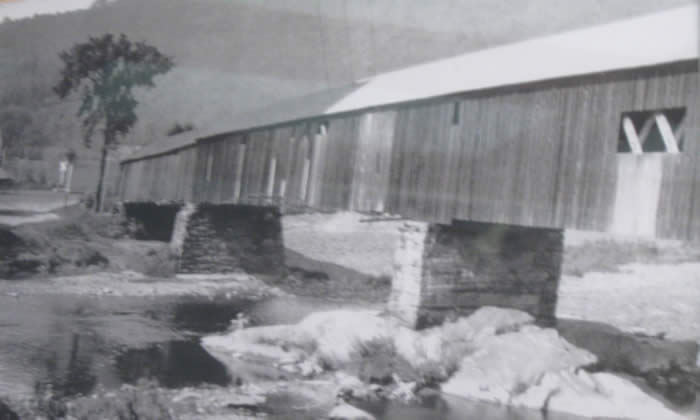
A photo of the old covered bridge before it was
destroyed in the hurricane and flood of 1938.
 The bridge was destroyed by the hurricane of 1938, prompting RSW to create the new paintings and chalk
from the unsatisfactory mid-1920s 25" x 30" version of the scene. One question does remain... we found, among his personal items, an old photograph of the bridge that
nearly matches the vantage point and perspective of these bridge paintings. We do not know the age of the photograph and there is nothing written on its back but
what, if any, role did it play in RSW's process of creating these paintings? (See image below)
The bridge was destroyed by the hurricane of 1938, prompting RSW to create the new paintings and chalk
from the unsatisfactory mid-1920s 25" x 30" version of the scene. One question does remain... we found, among his personal items, an old photograph of the bridge that
nearly matches the vantage point and perspective of these bridge paintings. We do not know the age of the photograph and there is nothing written on its back but
what, if any, role did it play in RSW's process of creating these paintings? (See image below)
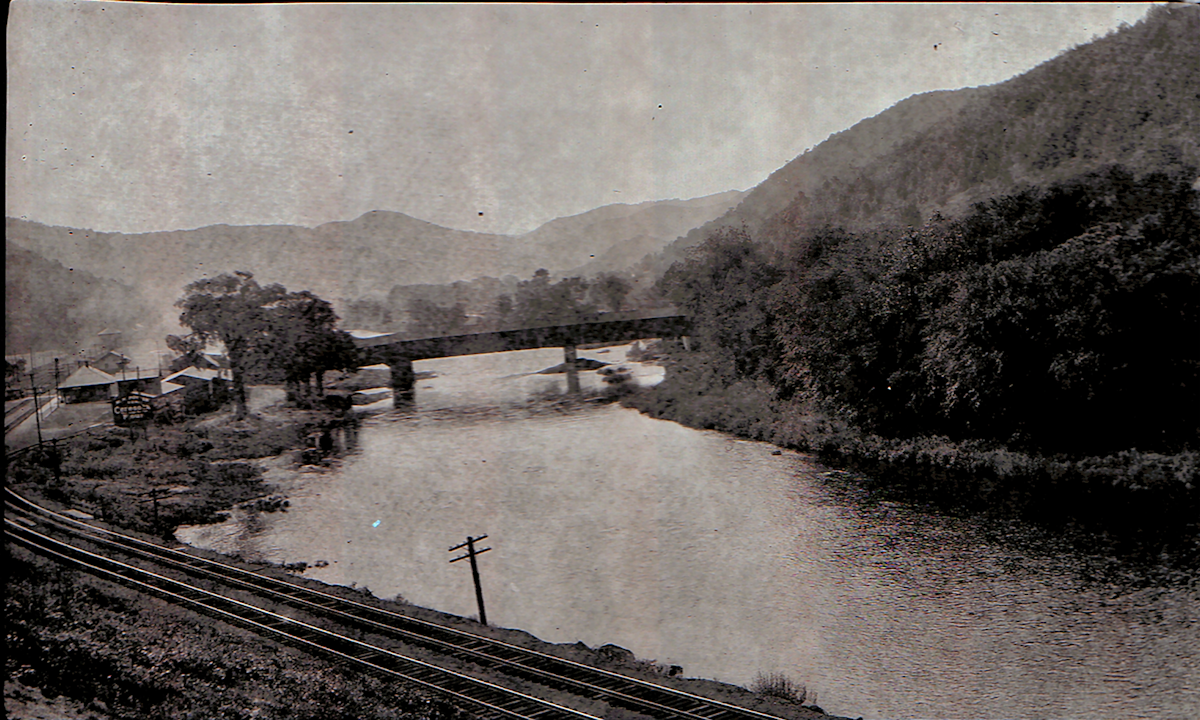
 From a collection of old photographs in
From a collection of old photographs in
RSW's personal items this picture of the Charlmont
Bridge, before it was destroyed by the 1938 hurricane,
closely resembles the perspective of the artwork.
Photograph to the right:
On digitalizing all of RSW's pictures that he kept with his personal items. We came across a number of photos that closely resemble paintings of a similar subject. It has raised questions as to if Woodward used photographs as a tool in creating some paintings. For this particular painting he claims to have made it from an earlier painting which was then destroyed. While probably true, we wonder if the earlier painting was when he photographed his vantage point.

.png)
